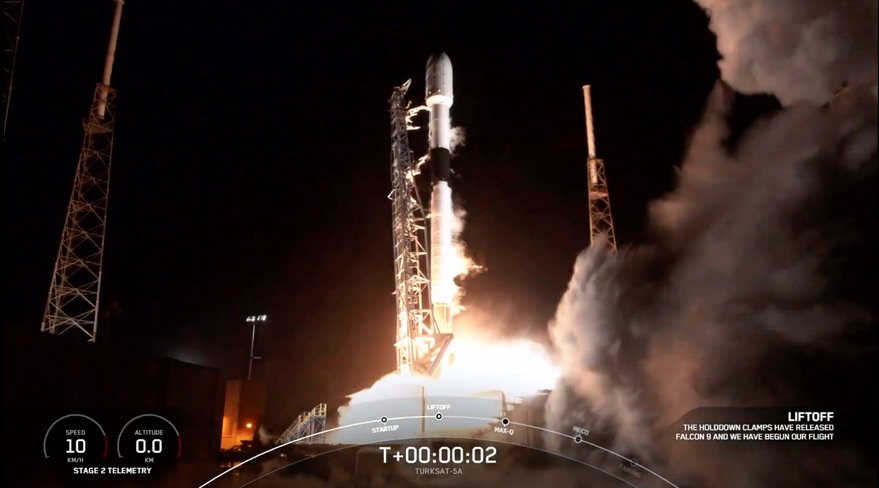Products You May Like
WASHINGTON — A SpaceX Falcon 9 launched a Turkish communications satellite Jan. 7 to start what may be the busiest year yet for the launch company.
The Falcon 9 lifted off from Space Launch Complex 40 at Cape Canaveral Space Force Station at 9:15 p.m. Eastern, more than 45 minutes into a four-hour launch window. SpaceX delayed the launch from the start of the window because of a problem with a ground station downrange from the launch site.
The Falcon 9’s payload, the Turksat 5A communications satellite, separated from the Falcon 9’s upper stage 33 minutes after liftoff, entering into a geostationary transfer orbit. The rocket’s first stage, which previously launched the GPS SV03 satellite in June 2020 and two Starlink missions in September and October, landed on a droneship in the Atlantic Ocean.
Turkish satellite operator Turksat ordered Turksat 5A and 5B from Airbus Defence and Space in 2017, with SpaceX selected to launch the two spacecraft. Turksat 5A weighed 3,500 kilograms at launch. The spacecraft, based on the Eurostar E3000 bus, is equipped with electric propulsion for both orbit raising and station keeping.
Turksat 5A will operate at 31 degrees east in GEO, providing Ku-band broadcast services over portions of Europe, the Middle East and Africa. The satellite will enter service in the second quarter of 2021.
Turksat 5B, weighing 4,500 kilograms, will carry Ka- and Ku-band payloads and operate from 42 degrees east in GEO. It is expected to launch later this year, also on a Falcon 9.
The Turksat 5A launch is the first of the year for SpaceX, and the first orbital launch worldwide in 2021. SpaceX performed 25 orbital launches in 2020, all using Falcon 9 vehicles, while an additional Falcon 9 was launched for a suborbital in-flight abort test of the company’s Crew Dragon spacecraft. SpaceX hasn’t disclosed a specific number of launches it plans to perform in 2021, but unofficial manifests suggest the company could perform more than 30 Falcon 9 and Falcon Heavy launches in the year, for government and commercial customers as well as of its own Starlink satellites.
SpaceX is also continuing work on its next-generation Starship vehicle in Boca Chica, Texas. A Starship prototype could attempt an orbital launch later this year, depending on the progress the company makes on suborbital flights of other prototypes.
SpaceX’s next scheduled orbital launch is no earlier than Jan. 14, when a Falcon 9 will launch from Florida on the company’s first dedicated smallsat rideshare mission, called Transporter-1, carrying several dozen smallsats.
